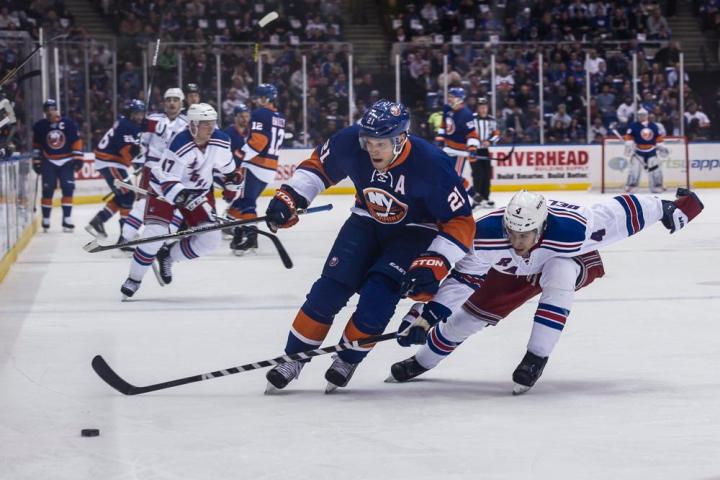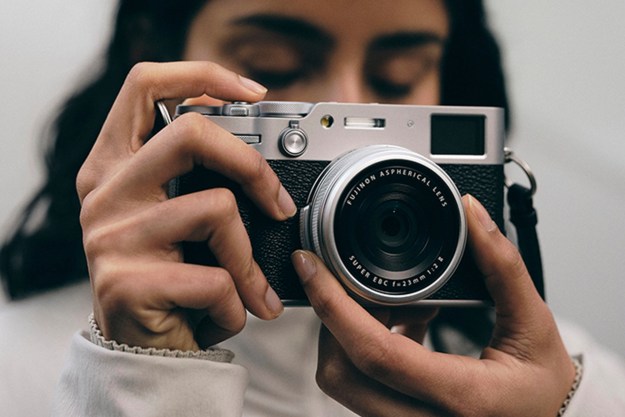
Hockey players might not be as speedy as NASCAR, but it is one of the fastest sports in the world. The players whip around the ice on razor-sharp skate blades in a game that can change in a matter of seconds – making it a difficult event to photograph. Even for fans that have been going to games since they were youngsters, they may not feel compelled to bring along the DSLR because they didn’t think they could get great shots. True, shooting a hockey game is difficult for a number of reasons, but not impossible. It requires some knowledge of the game, the right equipment, and a fair amount of patience.
But whether it’s your kid’s amateur hockey league or two top-notch seats you scored at the NHL level from your boss, hockey can be an exciting game to photograph – it’s the kind of activity that’s designed to be captured with that DSLR you got, and will serve as great practice if you’re learning the ins and outs of using one. To help you gain some confidence in shooting the sport we spoke with freelance professional photographer Joseph Nuzzo, who shares with us some tips and his work as a hockey photographer. Not only is Nuzzo an experienced sports photog, he also plays the sport in his spare time, so he comes to the game not just as a pro photographer, but also as a fan – like you.
The action in hockey moves so quickly you need to be proactive.
Avoiding getting hit
Nuzzo says the biggest obstacle for media photographers is not getting hurt or breaking expensive gear. “Placing a camera lens through the opening in the glass, out into the playing area exposes the lens and shooter to great risk. A common play in hockey is the “dump and chase.” This is when a team shoots the puck into the offensive zone at high speeds along the boards and then chases it down. Often the puck is whipping around the boards at about the same height as the openings in the glass for camera lenses.”

He says that if a puck hits the camera lens it will almost certainly break the lens. “I saw it happen twice to the same photographer in one game! I never saw that photographer again. Having broken probably $6,000 in lenses in one game would be too much for almost anyone. Also the boards and protective glass are designed to flex. This helps protect the players from injuries when they are hit along the boards. If you are shooting in the same corner and the glass flexes you need to make sure you are clear of the camera opening. If not, when the glass flexes it could hit your camera leaving you with a pretty bad black eye, a broken camera, and a bruised ego.”
He adds that lighting in NHL arenas is constant and bright but shooting on an amateur level will certainly be tougher as arenas tend to shut off lights to save money.
Know the game
Having played hockey his whole life, Nuzzo points out that it has defiantly influenced his shooting style. “I have and still do play goal and I am always looking for great shots of the goalie making saves. It is my favorite part of the game as well as my favorite type of photo. Having played for so long also helps me predict where I should be pointing my camera ahead of time. While you certainly don’t have to play hockey to shoot great photos you should have a good understanding of the game. If you don’t know a lot about the game, just tune in the TV and watch a few games to get a feel for the game. The action in hockey moves so quickly you need to be proactive. If you are reactive it is usually too late and you missed the shot,” he explains.
It is essential to have a camera that can fire-off multiple shots.
Know the players
Nuzzo says that most teams have a game day email listing all the key stats for that night’s game. Make sure you sign up for it. It will let you know if a player is about to hit a milestone. That way you can be ready for it. It will also let you know what players on each team are on a hot streak. These are the guys you want to key in on.
Remember to set your white balance
As Nuzzo already mentioned, it’s important to get the white balance right, but after a few times shooting in the same arena you’ll have it down pat. “White is a popular color in hockey. The boards, visiting jerseys, and the ice are all various shades of white. This will confuse your camera’s auto setting. Manually set your white balance off the ice once all the lights in the arena are turned on. This is usually when the players take the ice just before the game begins. Getting the right white balance will help prevent the ice from looking dirty or gray.”

Making the save
Nuzzo says that in order to stop a shot that can reach speeds of over 100 mph, a goalie has to react before the shot is taken. “Knowing this little secret will help you get great goalie shots consistently. In order for you to get a shot of a goalie making a save, watch the goalie’s knees. Once his knees start to bend, start shooting and don’t stop. This means the goaltender is anticipating a shot. The goaltender will go down in a butterfly position to cover the low ice for most shots. If the puck reaches him, you most likely got the shot.” Using your camera’s burst mode can also help.

Changing shooting locations
Most arenas have an area for the media that’s suitable for shooting from a designated spot on the upper level, but not everybody has access to it. But that doesn’t mean you can’t good shots from different angles. “Sometimes I will shoot the first and third period from ice level and shoot the second period from the upper level. This gives me a different perspective. Shooting from the upper level gives you the advantage of getting a decent view of both nets but at a cost. You will need a 400mm lens and you may have the glass in your shot on the side of the arena closest to you.”

Look for emotion
“Up to now we have spoken a lot about getting shots of the action but emotion is a major part of the game too. Some of your best shots are going to be the players’ faces.” Nuzzo adds that the look on a player’s face, whether it be elation or despair can be some of the most compelling shots you will take of the game.

Celebrate in your head
“Seconds after the home team scores a goal is an exciting time in a hockey arena, especially if you’re a big fan of that home team. A siren sounds, lights go off, the crowd jumps to their feet. Time to celebrate…but not for you. Don’t get caught up in the celebration and more importantly, don’t stop shooting. Now is when you will get some of your best shots of the emotion on the player’s faces,” he concludes.

(Copyright images via 2013 Shutter Speak Photography)




